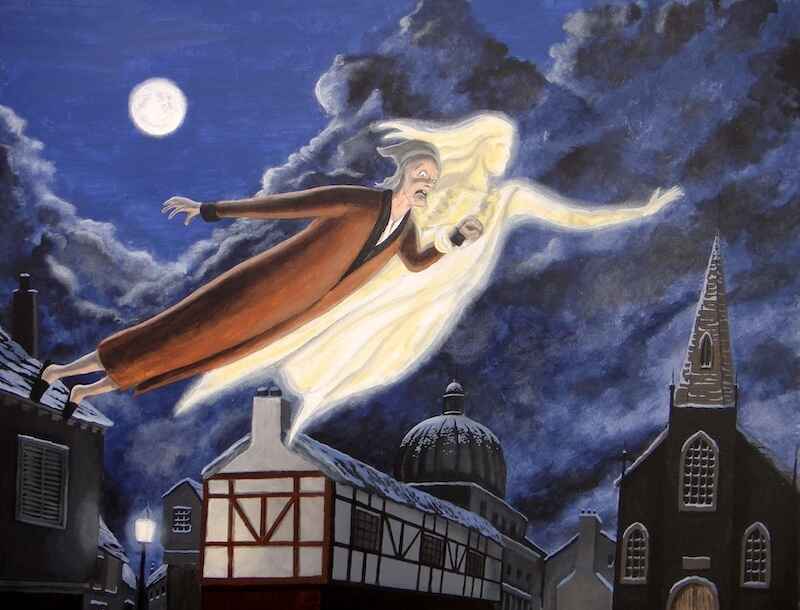Editor’s Note: Merry Christmas and happy holidays from the entire Liberty Through Wealth team!
As a reminder, our offices and the markets will be closed tomorrow, December 25, in observance of Christmas Day. We’ll resume our normal publication schedule on Thursday.
(Our offices will also be closed on Wednesday, January 1, for New Year’s Day.)
Below, Alexander Green details the historic novelist who has been deemed “the man who invented Christmas.”
Keep reading to get into the holiday spirit!
– Nicole Labra, Senior Managing Editor
A few years ago, my family and I attended a performance of A Christmas Carol at the American Shakespeare Center in Staunton, Virginia.
It was superb. My kids particularly enjoyed it and were surprised to learn that the author – Charles Dickens – is the man most responsible for the modern celebration of the season.
This is a story that deserves to be more widely known…
Dickens is one of the greatest writers in the English language. He published 15 novels in his lifetime. None has ever gone out of print.
Yet in 1843, Dickens’ popularity was at a low, his critical reputation in tatters, his bank account overdrawn. Facing bankruptcy, he considered giving up writing fiction altogether.
In a feverish six-week period before Christmas, however, he wrote a small book he hoped would keep his creditors at bay.
His publishers turned it down.
So using his meager savings, Dickens put it out himself. It was an exercise in vanity publishing – and the author told friends it might be the end of his career as a novelist.
Yet the publication of A Christmas Carol caused an immediate sensation, selling out the first printing – several thousand copies – in four days.
A second printing sold out before the new year, and then a third.
Widespread theatrical adaptations spread the story to an exponentially larger audience still.
And it wasn’t just a commercial success.
Even Dickens’ chief rival and foremost critic, William Makepeace Thackeray, bowed his head before the power of the book…
The last two people I heard speak of it were women; neither knew the other, or the author, and both said, by way of criticism, “God bless him!” What a feeling this is for a writer to be able to inspire, and what a reward to reap!
Today we all know the tale of tightfisted Scrooge – “Bah! Humbug!” – and his dramatic change of heart after being visited by the ghosts of Christmas Past, Present and Future.
But A Christmas Carol didn’t just restore Dickens’ reputation and financial health.
It also breathed new life into what was then a second-tier holiday that had fallen into disfavor.
As Les Standiford notes, in early 19th-century England, the Christmas holiday…
Was a relatively minor affair that ranked far below Easter, causing little more stir than Memorial Day or St. George’s Day today. In the eyes of the relatively enlightened Anglican Church, moreover, the entire enterprise smacked vaguely of paganism, and were there Puritans still around, acknowledging the holiday might have landed one in the stocks.
The date of Christmas itself is arbitrary, of course. There is no reference in the Gospels to the birth of Jesus taking place on December 25, or in any specific month.
And while the date was marked on Christian calendars, celebrations were muted.
That changed when A Christmas Carol became an instant smash, stirring English men and women to both celebrate the holiday and remember the plight of the less fortunate. This was exactly the author’s intent.
Dickens grew up in poverty and was forced into child labor. (His father, a naval pay clerk who struggled to meet his obligations, was thrown into debtors prison.)
Yet despite these handicaps, Dickens educated himself, worked diligently and rose to international prominence as a master writer and storyteller.
He was a great believer in self-determination and, in particular, the transformative power of education. With learning, he said, a man “acquires for himself that property of soul which has in all times upheld struggling men of every degree.”
Yet in the London of Dickens’ day, only 1 in 3 children attended school. Some worked in shops, others in factories. Still others resorted to theft or prostitution to live.
Dickens was determined to expose their plight. A Christmas Carol, in particular, is a bald-faced parable. That is something few novelists attempt. (And even fewer succeed.)
Dickens said his novels were for the edification of his audience.
His goal was not just to entertain but to enlighten. And A Christmas Carol was designed to deliver “a sledgehammer blow” on behalf of the poor and less fortunate.
It worked. Scrooge – a character as well known as any in fiction – is now synonymous with “miser.”
Yet through his remarkable transformation, the author reminds us that it is never too late to change, to free ourselves from selfish preoccupations.
Dickens’ biographer Peter Ackroyd and other commentators have credited the novelist with single-handedly creating the modern Christmas holiday.
No, not the contemporary orgy of shopping, spending and ostentatious display.
In A Christmas Carol, there are no Christmas trees, gaudy decorations or – apart from “the big, prize turkey” at the end – any presents at all. The only gifts exchanged are love, friendship and goodwill.
In one small book, Dickens changed the culture, inspired his contemporaries and helped restore a holiday they were eager to revive.
More than a century and a half later, A Christmas Carol is still a tonic for our spirits – and an annual reminder of the benefits of friendship, charity and celebration.
